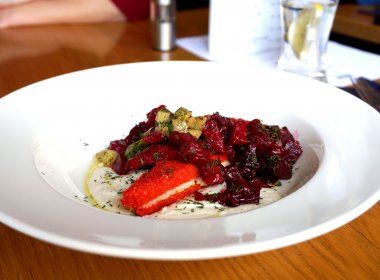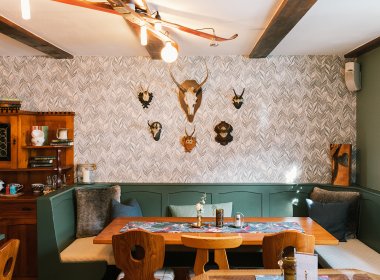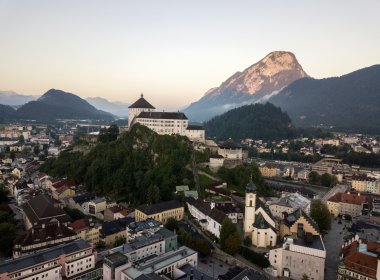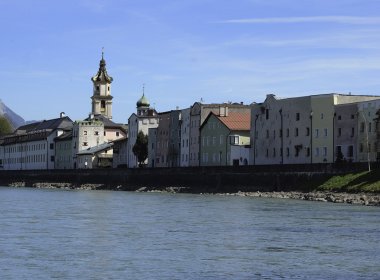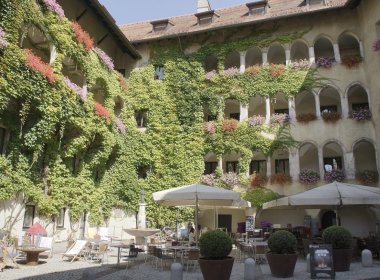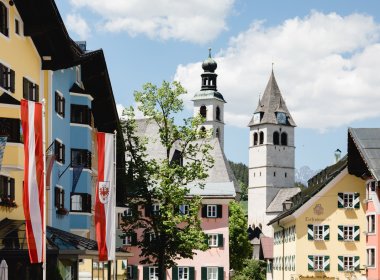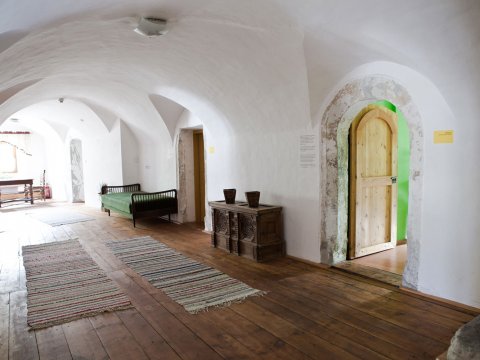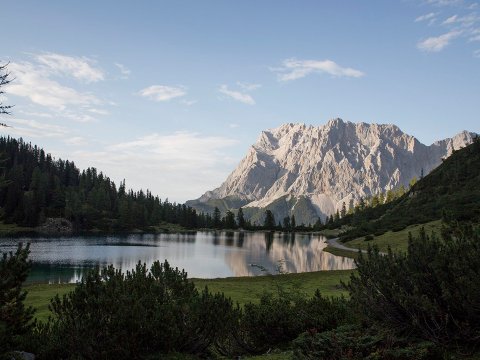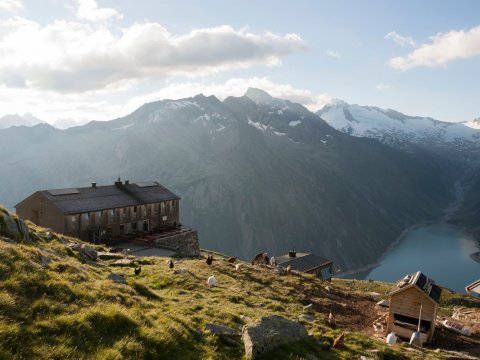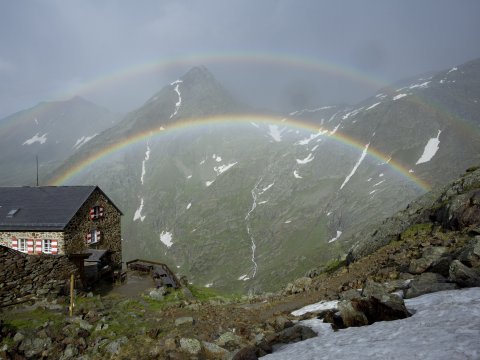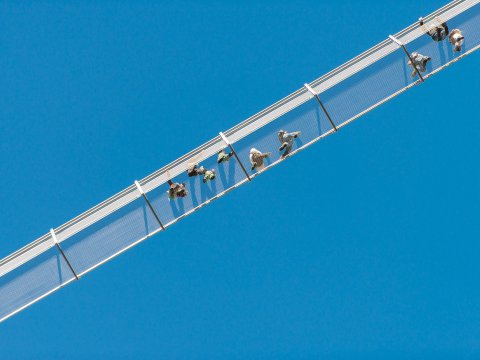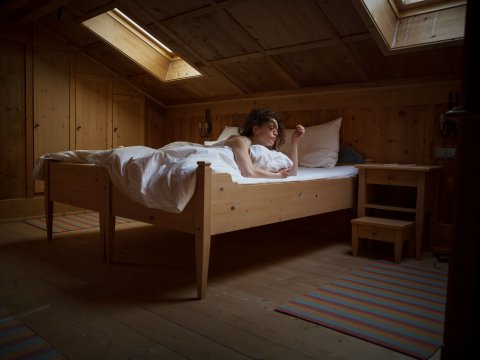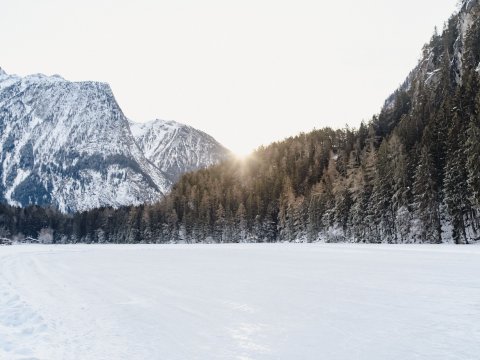A Town Steeped in History: A Day in Hall in Tirol
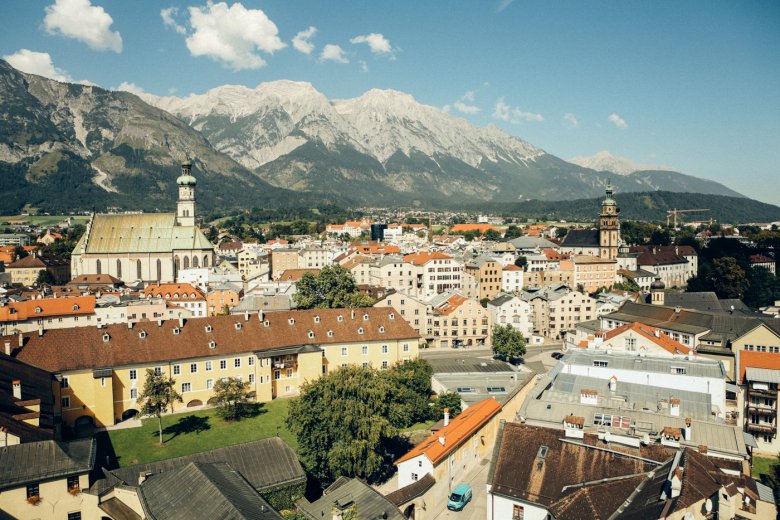
I knew it before: Hall is one of my favourite must-see-towns in Tirol. Its rich bundle of pastel buildings and cobbled streets feels refreshingly real and resembles an Italian town. Its enchanting Christmas bazaar never fails to amaze me. The winding lanes, punctuated by pastel-coloured townhouses, are made for aimless ambling and there are many hidden gems to discover – love is in the detail and it’s the treasures and treats of small town individuality that make Hall so special. Hall has a history of great prosperity – salt mining in the Middle Ages made it the most important commercial hub in the region as early as in the 13th century. The importance of salt in the history of Hall is also seen in the town’s coat of arms that shows two Lions holding a barrel of salt. Moreover, its name refers to „salt“, too, as the word ‘Hall’ is an ancient word for salt.

Unlike nearby Schwaz, which had grown rich on silver and copper mining, Hall drew its wealth from salt mines. In the 15th century, Hall got the right of coinage, when the Tirolean Mint was moved from Merano in South Tyrol to Hall. In this period, Hall was one of the most important towns in the Habsburg Empire. Thus, the town has a history of great prosperity and the luxurious buildings, the elegant architecture lining the streets, and the mint combine to make it clear that in its day, Hall was a local powerhouse. Artfully combining ancient history with contemporary flourishes, this real gem is definitely worth taking a closer look at.
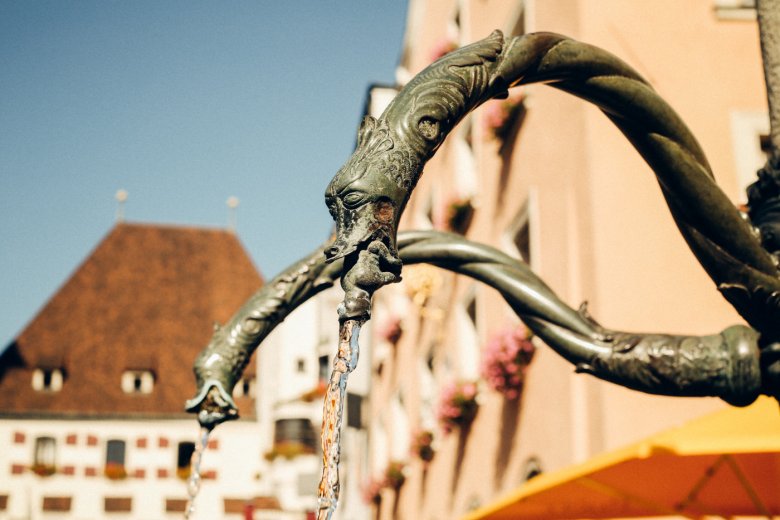
Hall Makes History.
How to get the most out of your visit to Hall? Starting with the famous iconic sights of the Hall Mint and Hasegg Castle is an excellent way to familiarise yourself with the town. I meet Anita Töchterle from the Hall Tourist Information Office who will join me this morning to show me around the most important sights and attractions and reveal its history. Due to its compact nature Hall is ideal for exploring by foot. On our walk to Münze Hall, the Hall Mint Museum & Mint Tower, we pass an excavation site: “Hall is submitted on the Tentative List to become a UNESCO World Heritage Site,” explains Anita Töchterle. A team of archaeologists and volunteers is seeking for remaining drives of the 16th century rolling mill, the first automated coining machine.
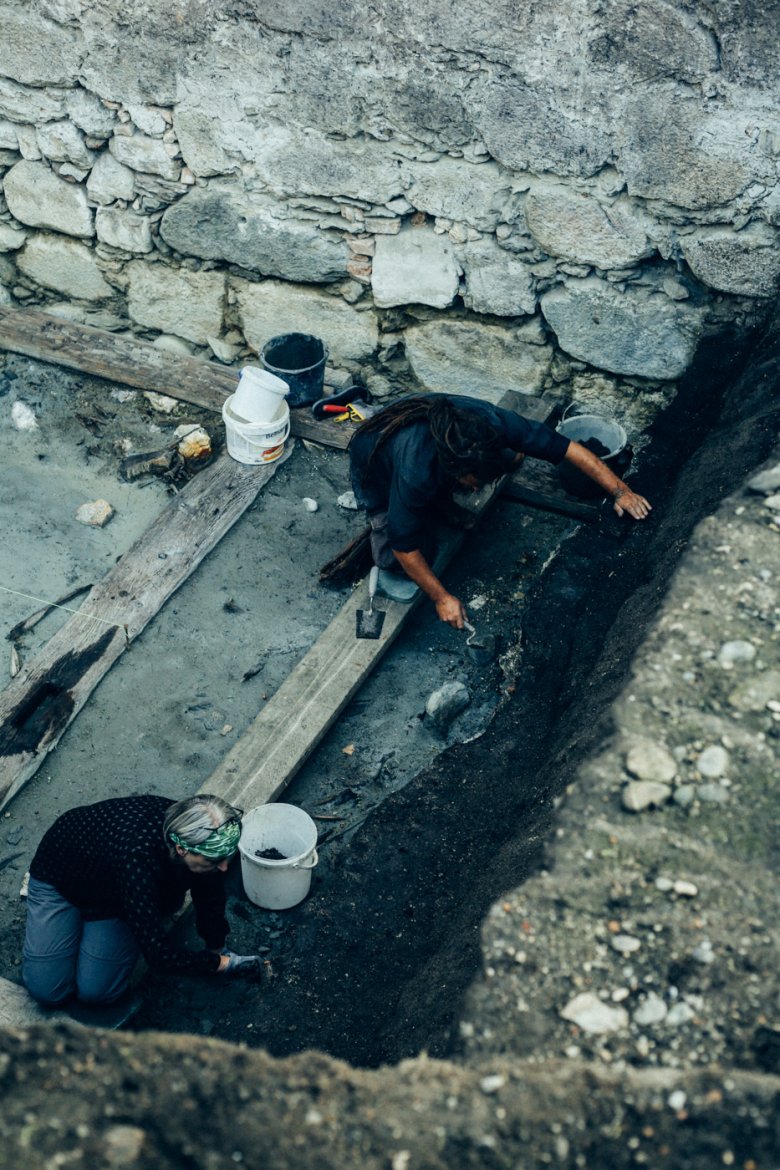
In the 15th and 16th century, the small town of Hall was one of the most important commercial hubs in Europe. The first silver coin, the Taler, was coined in Hall and became a valued currency throughout the world. Many currencies such as the US Dollar and the Yen share the origin from the first high denomination silver coin. The Dollar is even named after it (say it quickly and you will realize it was the root of the modern word, dollar). In the 16th century, technical innovations assured to maintain the exceptional reputation of the Mint. The roller-press coinage was introduced for regular use and replaced the minting by hammer. The roller coining machine was further developed in Hall, enabling for the first time an automated mass production of coins – 200 years before the Industrial Revolution.
A Coin for Each Emperor.
We stroll through the modern exhibition spaces of the Hall Mint and Anita, my knowledgeable guide, reveals the history of the coins to me. She tells me that it has been customary for the currency to bear the head of the ruler on one side. The effigies of the rulers on coins even had to be adapted with advancing age. Just imagine what this means for today: All coins had to be replaced with every change of government.
The highly demanded Maria Theresien Taler (MTT), a silver bullion coin that has been used in world trade continuously since they were first minted, is on display here as well. The MTT came to be used as currency in large parts of Africa until after World War II. The MTT continues to be produced by the Hall Mint for special occasions. The museum even lets you struck your own souvenir coin on a hand powered screw press.
Upon walking through the inner courtyard of Hasegg Castle, my guide points at the Mint Tower: “Here are the kestrels.” I am amazed and stare at the tiny window. “We are working together with the Alpine Zoo at Innsbruck. The Mint Tower has become the nesting place for kestrels. Museum staff feeds the birds. A webcam was installed in the nesting place enabling the public to access a live feed for those wanting to watch the birds. The birds fly in and out of this window.”

Old Town Stroll: From ‘The Poor in Coin’ to the Famous Hall Cake
Now I am off to discover the iconic sights and the hidden gems of the Old Town, which by now I have only visited during the time when the famous Christmas Bazaar took place. On the Lower Town Square, Anita shows me the Sigmund Fountain. The fountain figure depicts Archduke Sigmund of Tirol (who ordered the transfer of the Mint from Merano to Hall) and was created by Linz-based artist Rudolf Reinhart. The inscription makes me smile: Sigmund ‘the Rich in Coin’ by Reinhart ‘the Poor in Coin’.
The extraordinary shop signs and fountain figures by metal sculptor Reinhart can be found all over the town. Diana Bar at “Goldener Löwe” Inn, which is deeply rooted in tradition and located on the Upper Town Square, has a variety of his sculptures on display.


On our way to the Upper Town Square, which is accessible via eight alleys and lanes, we walk past Café Lizette: Here you can enjoy your coffee in the shop window, while viewing passers-by in the narrow lane.

The Upper Town Square is the heart of the Old Town. The many delightful cafes in the shadow of mighty St. Nicholas Church offer a refuelling retreat for shoppers, meeting spots in which to catch up with friends or idyllic locations to sit and watch the world go by – and again I feel like being in an Italian town. Anita recommends Konditorei Weiler Café as the perfect place to drop in for delicious coffee, their iconic Hall Cake and that unique Hall flare. I really have to give it a try.
The Heart of Old Town.
Right next to the Parish Church is the Town Hall, which crowns the square with its unmistakable steep roof pitch and red-white-red shutters. The town hall is home to one of Tirol’s most beautiful marriage halls. Well worth visiting is Saint Magdalene’s Chapel, which is located on the eastern front of the Parish Church. Its interior houses notable Gothic-style works of art, including the oldest frescoes of Hall.
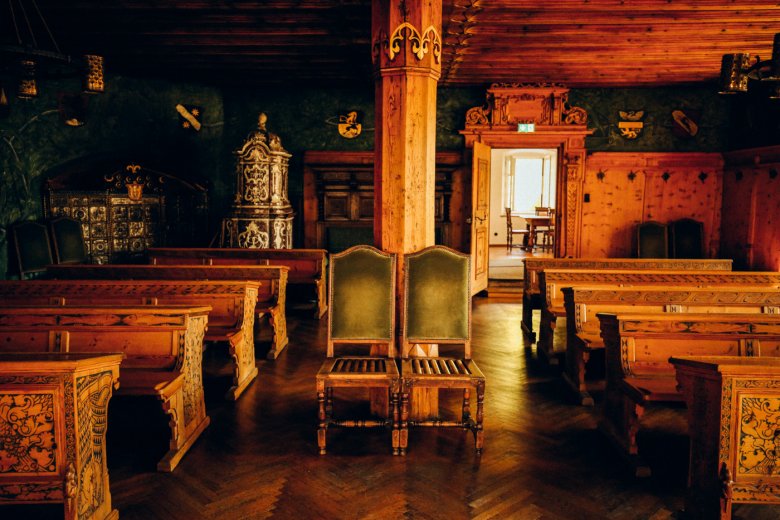
The former Royal Building, located on the Upper Town Square as well, today houses the noteworthy Mining Museum, where visitors can take a trip back in time to see how salt was mined in the Halltal Valley for 800 years. Learn all about salt mining in a replica of a Halltal Valley Salt Mine where virtually everything is exactly as it was left in the year 1967. Tours are given of the reconstructed salt mine, complete with pits, shafts, drills, and tools. It feels like a real mine.

Old and New.
Our discovery tour takes us through cobbled lanes and alleys. And everywhere we go, I notice cramp irons on house fronts. What are they all about? “These iron bars are used to hold masonry,” my expert guide explains. “In the year 1670, an earthquake caused serious damages in the old town center. This was when the steeple of the parish church collapsed.”
Next we stumble upon “Büro im Laden”, literally “Office in the Shop”, a Concept Store in one of Hall’s oldest stores. Combining old and new, it’s the brainchild of owner Katrin Stiller and a remarkably playful celebration of all those small things that make life beautiful. The building itself is more than 500 years old and a latrine is visible in its lower area, telling stories of life long past.
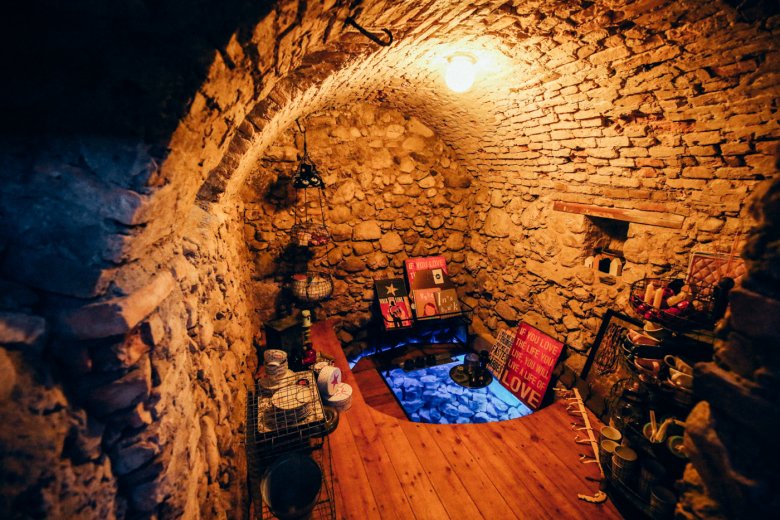
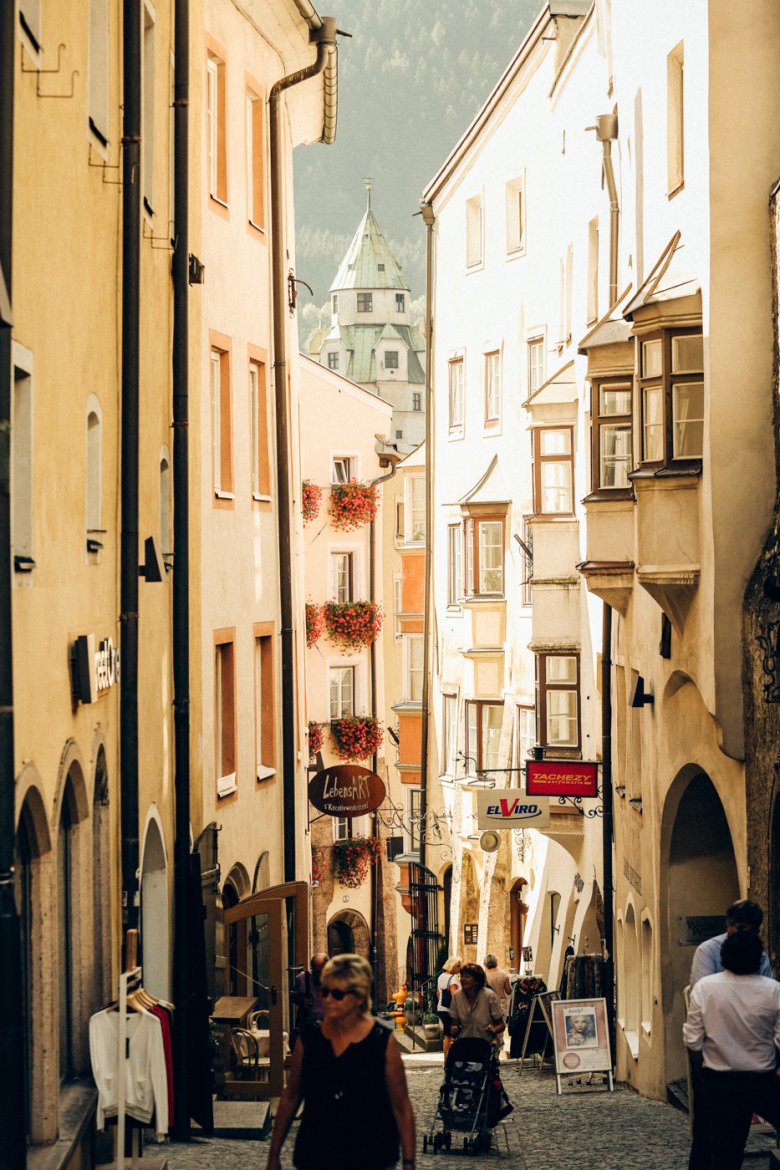
Creating an eclectic mix of old and new is a very striking feature of Hall anyway: A former chapel now houses a vibrant bakery where visitors can marvel at an amazing fresco painting. And the pink bakery shop on Rosengasse lane, which is aptly named ‘Villa Kuchenbunt’ (literally, the villa of colourful cakes), has a window on a picturesque courtyard with wooden stairs, ivy and, well, the omnipresent cramp irons on the house front.
There is also a tension and collaboration between the historic and contemporary architecture in Hall. On the edge of the old town sits the Park Hotel, that rises in front of mighty mountains, and the UMIT Private University where 1,550 people study.
Hall, You Gem of a Town!
Having said goodbye to my guide Anita, I continue to stroll through the cobbled streets. I walk past Stiftsplatz Square, where the Jesuit Monastery and adjacent Damenstift Abbey with the Sacred Heart Basilica are located. The Abbey is the home of the silent order of Carmelite nuns who have a particular vocation to dedicate their lives entirely to prayer.
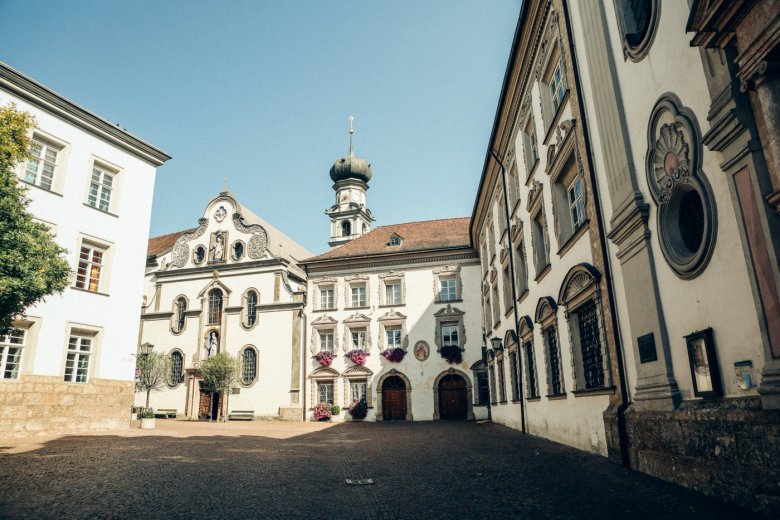
On Milser Straße Street, I discover the Guarinoni House – the colourful mosaic on the facade commemorates Hall’s Municipal Physician Dr. Hippolytus Guarinoni. At the end of the day, I return to Hasegg Castle and climb the spiral staircase to the top of the dodecagonal tower for far-reaching views over Hall. This is, quite simply, such a gem of a town! This relationship between Baroque towers, its bundle of pastel buildings in the old town, contemporary architecture, all towered by lofty mountain ranges is why I find walking the streets of Hall so appealing – those beautiful moments when history, nature and progress collide. I will come back soon!

Photo Credits: Carlos Blanchard










